Hops in Beer Brewing: Sunbeam
Published: July 23, 2025 at 8:40:34 PM UTC
Sunbeam Hops have become a favorite among brewers for their unique traits. They add a distinct flavor and aroma to beer. These hops come from a specific breeding program, making them versatile for many beer styles. The popularity of Sunbeam Hops in brewing is growing. They enhance the brewing process significantly. This guide will dive into their benefits and characteristics. It will also show how to use them in different brewing methods.
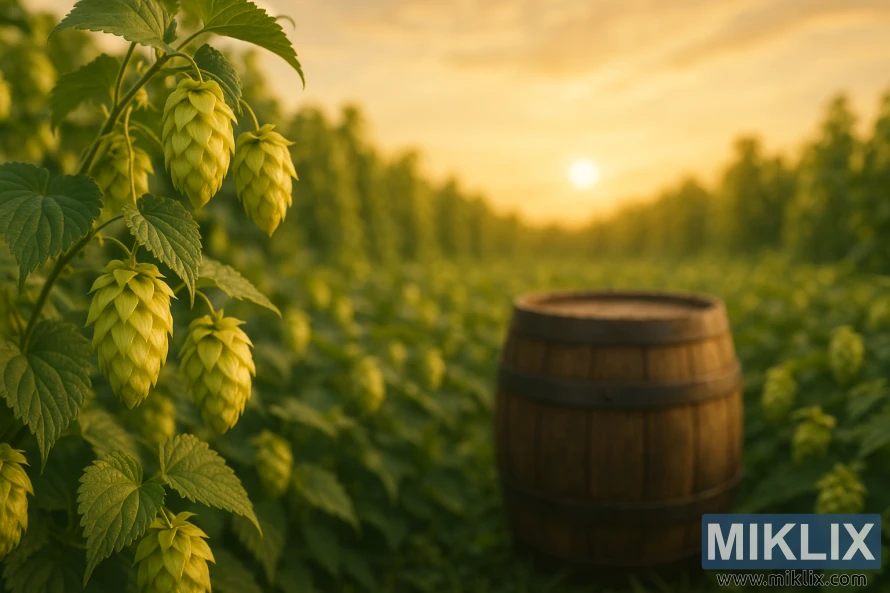
Key Takeaways
- Understanding the origin and characteristics of Sunbeam Hops.
- Exploring the benefits of using Sunbeam Hops in beer brewing.
- Learning how Sunbeam Hops can enhance beer flavor and aroma.
- Discovering the versatility of Sunbeam Hops in various beer styles.
- Guidance on effectively incorporating Sunbeam Hops into brewing processes.
Introduction to Sunbeam Hops
Sunbeam Hops, bred from a Saaz parent, have quickly become a favorite among brewers. Their unique traits and aroma set them apart. This new variety brings a fresh perspective to the brewing world.
The roots of Sunbeam Hops lie in traditional hop cultivation. By focusing on the best qualities of their Saaz parent, they offer a distinct flavor and aroma. This makes them perfect for various beer styles. Their development involves careful selection and breeding for consistency and quality.
Sunbeam Hops are highly valued for their aroma. They add a subtle yet distinct character to beers. This makes them a go-to choice for brewers wanting to innovate and stand out. Their unique properties make them versatile for different brewing applications.
The rising popularity of Sunbeam Hops among craft brewers is due to their versatility. As the demand for diverse and complex beer flavors grows, Sunbeam Hops are set to play a key role. They are poised to shape the future of beer brewing.
Chemical Composition and Properties
Understanding the chemical makeup of Sunbeam Hops is key to their value in brewing. The unique mix of compounds in these hops gives them distinct brewing traits.
Sunbeam Hops contain a notable amount of alpha and beta acids. Alpha acids mainly contribute to beer's bitterness. Beta acids, on the other hand, add to the flavor and aroma. The exact percentages can vary, but Sunbeam Hops are known for their balanced mix.
The alpha acid content in Sunbeam Hops typically ranges from 5% to 7%. This is considered moderate to high. It allows brewers to achieve a balanced bitterness without overwhelming the beer's other flavors. The beta acid content, usually between 3% to 5%, adds to the beer's flavor complexity.
Sunbeam Hops are highly valued for their aroma properties. The essential oils in these hops are responsible for the aromatic qualities that enhance the beer's sensory experience. Here are some key aspects of their chemical composition:
- Alpha acid content: 5-7%
- Beta acid content: 3-5%
- Essential oils: Contribute to aroma
- Cohumulone: A component of alpha acids, influencing bitterness quality
The cohumulone content within the alpha acids of Sunbeam Hops is relatively low. This is desirable as it leads to a smoother bitterness. This characteristic makes Sunbeam Hops an excellent choice for brewers aiming to create beers with refined bitterness and complex aroma.
Aroma and Flavor Profile of Sunbeam Hops
Sunbeam Hops introduce a distinctive mix of citrus, fruit, and spice to beer, enriching its taste. They are highly regarded for their capacity to add complexity and depth to a wide range of beer styles.
The aroma of Sunbeam Hops is marked by:
- Citrus notes, such as orange and lemon, which contribute to a bright, refreshing aroma.
- Fruity undertones, including notes of berries and tropical fruits, adding a rich layer to the beer's aroma.
- Subtle spice notes, which can include hints of floral and herbal elements, rounding out the hop's aromatic profile.
The flavor profile is equally complex, with Sunbeam Hops imparting:
- A balanced bitterness that complements the beer's malt sweetness.
- Flavors of citrus and fruit, mirroring the aroma and enriching the beer's overall taste.
- A smooth, clean finish, thanks to the hop's unique chemical composition.
Brewers can use Sunbeam Hops in various ways to craft unique and appealing beers. By grasping the hop's aroma and flavor profile, brewers can make informed decisions about when to add Sunbeam Hops during brewing. This ensures the desired characteristics in their beer.
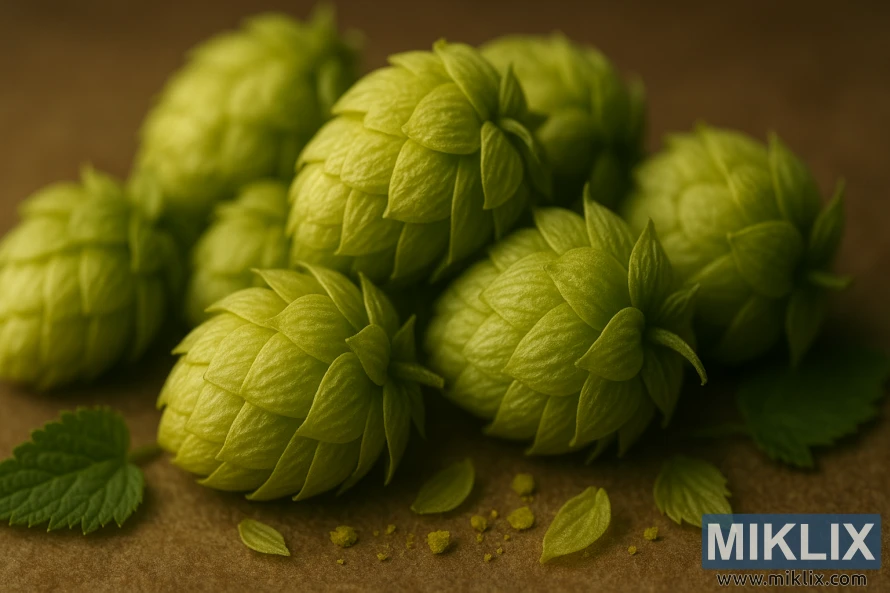
Growing and Harvesting Practices
The cultivation of Sunbeam Hops requires careful attention to their sensitivity to sunlight. They thrive in semi-shade conditions, which is essential for their quality and flavor. This approach protects the hops from sunlight damage, preserving their alpha acids and essential oils.
Sunbeam Hops grow best in regions with moderate climates. The soil must be well-draining, fertile, and have the right pH level. Farmers use trellising systems to support the plants. This ensures they get enough sunlight while maintaining the necessary semi-shade.
Harvesting Sunbeam Hops is a precise process. It involves monitoring the hops for optimal maturity. The timing of the harvest is critical, as it affects the quality and flavor of the hops. Sunbeam Hops are usually ready in late summer to early fall, when the cones are fully formed and the alpha acid content is at its peak.
During harvesting, farmers carefully pick or mechanically harvest the hop cones. They take care to minimize damage to the delicate lupulin glands. The harvested hops are then dried to a specific moisture level to preserve their quality. Proper drying and storage techniques are essential for maintaining the integrity of the Sunbeam Hops until they are used in brewing.
- Optimal growing conditions include semi-shade and well-draining soil.
- Harvesting is typically done in late summer to early fall.
- Careful handling during harvesting minimizes damage to the hop cones.
Best Storage Methods for Sunbeam Hops
Preserving Sunbeam Hops' unique traits requires proper storage. This ensures their quality and aroma remain intact, benefiting the brewing process.
Sunbeam Hops, like other varieties, are sensitive to temperature, moisture, and light. Poor conditions can harm their quality and aroma.
For optimal storage, keep Sunbeam Hops in a cool, dry spot. Use airtight containers or packaging to block moisture and air.
- Store in airtight containers or vacuum-sealed bags.
- Keep them in a cool, dark place, such as a refrigerator or freezer.
- Avoid exposure to heat, light, and moisture.
- Minimize the time hops are stored before use.
Adhering to these storage tips helps brewers maintain Sunbeam Hops' quality and aroma. This ensures they remain a valuable brewing ingredient.
Brewing Applications and Techniques
Sunbeam Hops have become a key ingredient in beer brewing, opening up new possibilities for brewers. Their unique aroma and flavor make them perfect for a variety of brewing techniques and beer styles.
One notable use of Sunbeam Hops is in late boil additions. Adding them towards the end of the boil helps preserve their delicate flavors and aromas. This method is ideal for ales and other styles where a strong hop flavor is desired.
Dry hopping is another technique where Sunbeam Hops shine. By adding hops to the fermentation tank or directly to the beer after fermentation, brewers can boost the beer's aroma without increasing bitterness. Their complex aroma makes them a top choice for dry hopping.
Sunbeam Hops can be used in many beer styles, from ales and lagers to pilsners. Their versatility lets brewers try different techniques and recipes, leading to unique and complex flavors. For example, in a pilsner, they add a subtle yet distinct character. In ales, they contribute to a more pronounced hop flavor.
- Experiment with late boil additions to preserve the delicate flavor and aroma of Sunbeam Hops.
- Utilize dry hopping techniques to enhance the beer's aroma.
- Explore the use of Sunbeam Hops in various beer styles to create unique flavor profiles.
Understanding the brewing applications and techniques for Sunbeam Hops opens up new possibilities for brewers. Whether in traditional or experimental brews, Sunbeam Hops provide a wealth of opportunities for creativity.
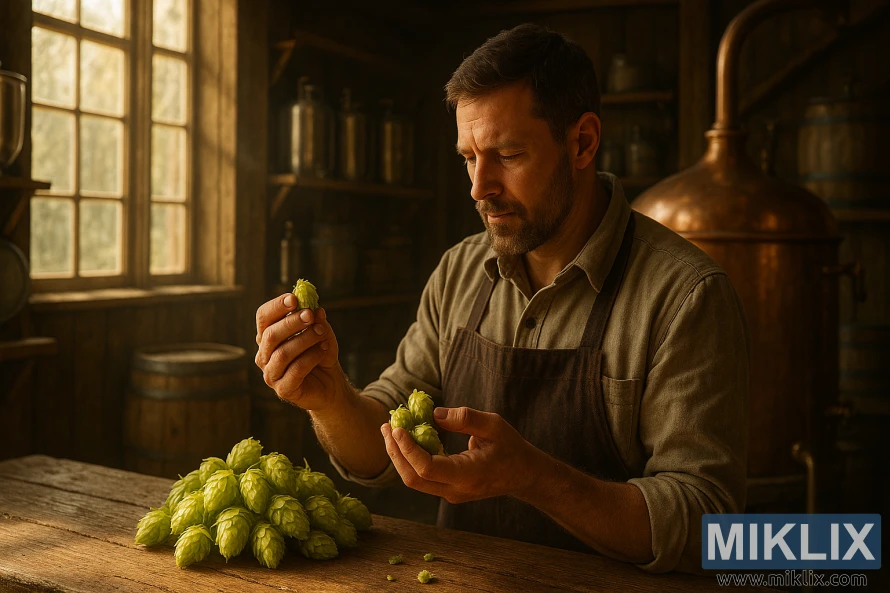
Optimal Addition Timing in the Brewing Process
The timing for adding Sunbeam Hops is critical for maximizing their impact on beer's flavor and aroma. Known for their unique traits, Sunbeam Hops can greatly enhance the brewing process when added correctly.
To achieve the desired flavor, brewers must balance Sunbeam Hops with other ingredients. The brewing process includes boiling, fermentation, and conditioning. Each stage can benefit from the strategic addition of hops.
When planning the addition timing, brewers should consider Sunbeam Hops' role in their beer. For flavor and aroma, hops are best added later in the boil or during dry-hopping. This approach maximizes their flavor and aroma contributions.
- Early boil additions contribute bitterness.
- Later boil additions enhance flavor and aroma.
- Dry-hopping maximizes aroma.
Understanding the optimal addition timing for Sunbeam Hops is essential. It allows brewers to enhance their beer's character, achieving a more complex and balanced flavor. This knowledge is vital for maximizing flavor and creating a high-quality brew.
Beer Styles That Work Best with Sunbeam Hops
Sunbeam Hops offer a unique flavor and aroma, making them ideal for a variety of beer styles. They are perfect for brewers aiming to balance bitterness and aroma in their brews.
These hops are versatile, fitting well into ales and pilsners. Their distinct traits enhance the taste and smell of these beers, making them a favorite among brewers.
- India Pale Ales (IPAs), where Sunbeam Hops contribute to a complex hop flavor and aroma.
- Pale Ales, which benefit from the balanced bitterness and subtle aroma of Sunbeam Hops.
- Pilsners, where the crisp, clean flavor of Sunbeam Hops complements the beer's delicate character.
When pairing Sunbeam Hops with different beer styles, brewers should consider the overall flavor profile they wish to achieve. By understanding how Sunbeam Hops interact with other ingredients, brewers can create beers that showcase the unique qualities of these hops.
By incorporating Sunbeam Hops into their brewing recipes, brewers can produce a variety of beer styles that cater to different tastes and preferences. Whether brewing an IPA, Pale Ale, or Pilsner, Sunbeam Hops are a valuable addition to any brewer's hop arsenal.
Substituting Sunbeam Hops in Recipes
Substituting Sunbeam Hops in recipes demands a deep grasp of their unique flavor and aroma. Sunbeam Hops stand out with distinct traits, greatly influencing the final product. Brewers must find hops with similar properties to keep the beer's flavor and aroma on track.
To effectively substitute Sunbeam Hops, brewers should look at these alternatives:
- Citra Hops: Known for their citrus flavor and aroma, Citra Hops can be a good substitute when looking for a similar bright, citrusy character.
- Mosaic Hops: With their complex blend of fruit and earthy notes, Mosaic Hops can replace Sunbeam Hops in recipes where a multifaceted hop flavor is desired.
- Amarillo Hops: Offer a floral and citrus profile, Amarillo Hops are another viable option for brewers looking to substitute Sunbeam Hops.
Understanding the chemical makeup of these alternative hops is key. The alpha acid content, beta acid content, and specific oil profiles (such as myrcene, linalool, and geraniol) must be considered. This ensures a smooth transition in recipes.
When substituting Sunbeam Hops, brewers should also think about hop addition timing. The stage at which hops are added during brewing (bittering, flavor, or aroma) impacts the final flavor and aroma. For instance, hops added late in the boil or during dry-hopping will contribute more to the beer's aroma.
By carefully choosing substitute hops and understanding their characteristics, brewers can achieve the desired brewing flexibility and recipe adjustment. This knowledge allows for the creation of a wide range of beer styles. From hoppy IPAs to more balanced ales, using Sunbeam Hops or their substitutes effectively.
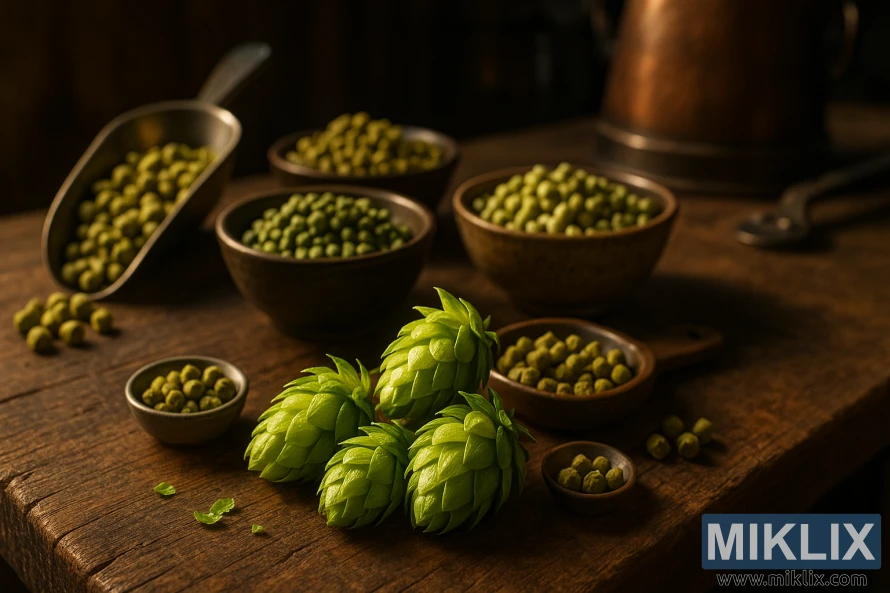
Common Brewing Challenges and Solutions
Using Sunbeam Hops in brewing can lead to various challenges, including flavor inconsistencies and hop variability. Brewers must be aware of these issues to optimize their use of Sunbeam Hops.
One common challenge brewers face is achieving a consistent flavor profile with Sunbeam Hops. The unique chemical composition of these hops can sometimes result in unexpected flavor notes. To mitigate this, brewers can adjust the timing of hop additions during the brewing process.
Another challenge is dealing with hop variability. Factors such as growing conditions, harvesting practices, and storage methods can affect the quality and characteristics of Sunbeam Hops. To address this, brewers should source their hops from reputable suppliers and implement rigorous quality control measures.
- Monitor and adjust hop addition times to achieve the desired flavor profile.
- Source Sunbeam Hops from reputable suppliers to minimize variability.
- Implement quality control measures to ensure consistency in hop quality.
Also, brewers may encounter issues related to the bitterness and aroma contributed by Sunbeam Hops. To overcome these challenges, brewers can experiment with different hop quantities and brewing techniques.
- Adjust the amount of Sunbeam Hops used based on the desired level of bitterness and aroma.
- Experiment with different brewing techniques, such as dry-hopping or late additions, to enhance the hop character.
- Consider the overall beer style and how Sunbeam Hops will complement or contrast with other ingredients.
By understanding and addressing these common brewing challenges, brewers can optimize their use of Sunbeam Hops. This will help them produce high-quality beers that showcase the unique characteristics of these hops.
Calculating Hop Quantities for Different Batch Sizes
To achieve the perfect balance of flavor and aroma in your beer, it's essential to understand how to scale Sunbeam Hop quantities for varying batch sizes. Whether you're brewing a small batch or a large quantity, the key to maintaining consistency lies in accurately adjusting the amount of hops used.
When scaling a recipe, brewers need to consider the ratio of hops to beer volume. A common approach is to use a simple proportion: if a recipe for 5 gallons requires 1 ounce of Sunbeam Hops, then for 10 gallons, you would need 2 ounces. Yet, this straightforward method doesn't always account for nuances in brewing dynamics, such as differences in boil vigor or equipment specifics.
A more precise method involves using a formula that takes into account the alpha acid percentage of the hops and the desired bitterness units (IBUs) or flavor/aroma contributions. For instance, the formula for calculating bitterness units can be adjusted based on the batch size and the specific characteristics of Sunbeam Hops. This approach ensures that the hop quantities are scaled not just by volume, but by the actual brewing requirements.
Here are some steps to follow when calculating hop quantities for different batch sizes:
- Determine the original recipe's hop quantities and batch size.
- Decide on the new batch size you want to scale to.
- Use the ratio of the new batch size to the original batch size to scale the hop quantities.
- Adjust the hop quantities based on the specific brewing technique or equipment being used.
For brewers using Sunbeam Hops, understanding their alpha acid content and how they contribute to the beer's overall character is critical. Sunbeam Hops, known for their unique flavor and aroma profile, require careful consideration when scaling recipes. By accurately calculating hop quantities, brewers can ensure that their beer maintains the desired flavor and aroma profile, regardless of the batch size.
Ultimately, the art of scaling hop quantities for different batch sizes involves a combination of simple arithmetic, an understanding of brewing science, and experience with the specific characteristics of the hops being used. With practice, brewers can master the skill of adjusting recipes to fit any batch size, ensuring consistency and quality in their beers.
Impact on Final Beer Characteristics
Sunbeam Hops are key in shaping the flavor, aroma, and bitterness of beer. Their role in brewing science is significant. They interact with other ingredients and processes to achieve the desired beer profile.
The flavor Sunbeam Hops add is complex and rich. They bring a unique mix of fruity and floral notes, improving the taste. Their aroma is also distinctive, complementing the beer's flavor.
In terms of bitterness, Sunbeam Hops offer a balanced and smooth quality. This is due to their alpha acids, which are essential for the beer's character.
The interaction between Sunbeam Hops and other brewing ingredients is delicate. The brewing process must be carefully managed. Factors like hop addition timing, boil duration, and fermentation conditions affect the final beer.
Understanding Sunbeam Hops' impact helps brewers craft unique beers. They can enhance flavor, aroma, or bitterness. Sunbeam Hops are versatile, allowing brewers to create a variety of beer styles.
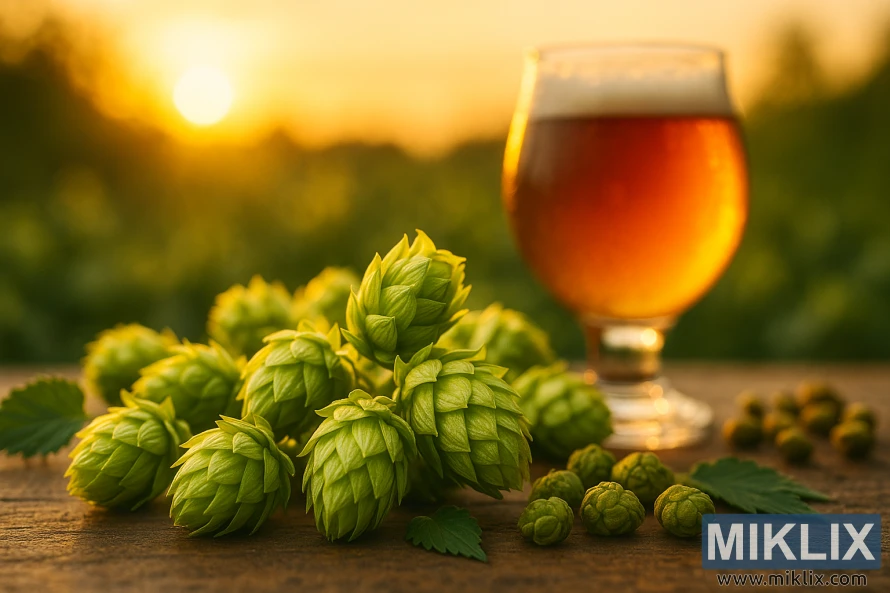
Commercial Success Stories Using Sunbeam Hops
The use of Sunbeam Hops in brewing has led to many commercial triumphs. Breweries have harnessed Sunbeam Hops' unique traits to craft beers that win awards and gain popularity.
In the United States, several breweries have seen significant gains after adopting Sunbeam Hops. For example, an Oregon craft brewery created an IPA with Sunbeam Hops. This IPA garnered accolades at prominent beer festivals.
The IPA's success stems from Sunbeam Hops' distinct aroma and taste. This allowed the brewery to tap into the demand for craft beers with unique features. As a result, they experienced a boost in sales and brand visibility.
In California, a brewery also found success with Sunbeam Hops. They brewed a pale ale that quickly became a best-seller. The brewery attributes this success to Sunbeam Hops' versatility and quality.
These stories underscore Sunbeam Hops' ability to elevate beer quality and appeal. As the brewing world continues to grow, Sunbeam Hops will likely remain a favorite among brewers aiming to innovate and stand out.
Quality Assessment and Selection Tips
To achieve the best flavor and aroma in your beer, evaluating Sunbeam Hops quality is key. High-quality hops can significantly enhance your brewing project. On the other hand, subpar hops can result in disappointing outcomes.
When assessing Sunbeam Hops, consider their appearance, aroma, and chemical composition. Opt for hops with a vibrant green color and a pleasant, floral aroma. Hops that appear dull, discolored, or have a strong, unpleasant odor should be avoided.
The chemical composition of Sunbeam Hops is also critical. Check the alpha-acid content, as it impacts the beer's bitterness and flavor. Sunbeam Hops generally have a moderate alpha-acid content, making them versatile for various beer styles.
- Check the packaging date to ensure freshness.
- Verify the storage conditions to prevent degradation.
- Use a hop aroma test to evaluate the hop's fragrance.
When selecting Sunbeam Hops, consider your brewing goals and the beer style you aim to create. For instance, if brewing a pale ale, focus on the hop's citrus and floral notes.
By carefully assessing and selecting high-quality Sunbeam Hops, you can ensure superior brewing quality. This will help you achieve the desired flavor and aroma in your final product.
Conclusion
Sunbeam Hops have become a key ingredient in beer brewing, known for their versatility and value. They bring a unique set of characteristics that improve both the brewing process and the final beer.
Their distinct aroma and flavor make Sunbeam Hops perfect for a wide range of beer styles. This includes everything from crisp pale ales to complex lagers.
By mastering the art of growing, harvesting, and storing Sunbeam Hops, brewers can unlock their full flavor. This results in beers that are not only complex but also appealing, highlighting their unique qualities.
In summary, Sunbeam Hops are a must-have for any brewer looking to enhance their craft. They offer numerous benefits that can elevate a brewer's beers, making them stand out in a competitive market.
Further Reading
If you enjoyed this post, you may also like these suggestions:
